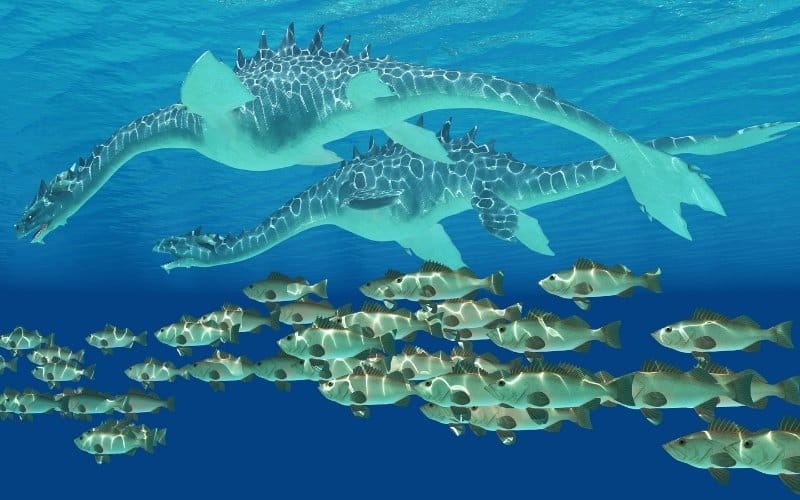What is the Mystery of the Sea Serpent?
Ancient Folklores of sea navigation and voyages have been agog with tales of sea monsters stalking vessels and ships. For centuries, the unexplored depths of the oceans have been referred to as places where horrifying monsters calmly wait for their next prey.
Their origins can be traced back to historical and mythological texts. For instance, the Old Testament mentions a battle between God and a sea monster named Leviathan/Rahab. Even records from Babylon say a combat between their God Marduk and a multi-head serpent called Tiamat. Also, a Canaanite open from ancient Syria mentions a battle between God Baal and the monster Leviathan.
In Norse Mythology, Jǫrmungandr, or “Miðgarðsormr”, is a long sea serpent. It enclosed the entire world, and there are stories of how some sailors mistook it for a chain of islands and lost their lives. In Japanese Mythology, Yamata no Orochi is a giant eight-headed serpent with glowing red eyes and a red belly.
The stories of marine monsters, including giant squids, sea dragons, reptilian monsters, multi-armed beasts and tales of sea serpents, have thus become terrifying legends and mysteries of the ocean. And most of the maps in the early times cautioned seafarers about such possible dangers at sea, and the unexplored areas in the waters were always marked with a message, i.e. “here there be dragons.”
Among all these so-called monsters, the serpent at the sea, intriguing and fearsome, forms a part of many marine cultures worldwide. The reference to the sea serpent can be found in various mythologies, including Greek, Mesopotamian and Hebrew. Scandinavian myths and tales are the sources of European sea serpent legends. As our medieval pioneers mentioned this marine monster numerous times, the sea serpents have been depicted as undulating in the deep water and coiled around ships and boats, putting an end to the life of seafarers.

The Sea Serpent Sightings
Sightings of these sea monsters have been reported for hundreds of years, and several such reports have also emerged recently. Various accounts have appeared about the reptilian sea monsters seen by seamen on the high seas and by people near the coasts. While the descriptions of the sea serpent people see vary to a certain extent, these descriptions are not without similarities.
A list of some of the more prominent tales of existence and sightings of sea serpents can be mentioned as follows:
• Scandinavian folklore has quite a little documentation of sea monsters swirling in the high seas. One of the many is Carta Marina, a publication of Olaus Magnus, a Swedish priest of the 1500s, detailed d the existence of many such sea monsters in the oceans.
• It was in 1639 that the first American sea serpent, later known as “Gloucester’s Sea Serpent,” was sighted off the coast of New England near Cape Ann, Massachusetts. According to John Josselyn, who reported this incident in An Account of Two Voyages to New England in 1641, the seafarers encountered a snake that “lay quailed up like a cable upon the rock at Cape Ann.” Three years later, another sighting of a serpent measuring 27 meters in length was reported near Lynn, Massachusetts.
• An 18th-century description of a sea serpent was given by the national saint of Greenland, Hans Egede. According to him, the crew aboard the ship passing the coast of Greenland on July 6, 1734, saw a terrible creature they had never seen before. The monster was longer than their vessel and had giant fins and a small head.
• Another famous sea serpent sighting happened in August 1848, when the crew of the Royal Navy’s HMS Daedalus saw an 18-metre-long creature during a voyage to Saint Helena in the South Atlantic. As the army officers described, the beast held a snakelike head above the water and was later labelled as an elephant seal and giant squid by some others.
• Cadborosaurus Willis or Caddy is a very popular sea serpent which frequently made headlines in newspapers and reports in the early 20th century. It is said that the creature was anointed with the name for being regularly sighted in Cadboro Bay in British Columbia.
• A carcass was caught in the fishing mesh of the Kuiyo Maru, a fishing boat native to Japan near the New Zealand coast, in the year 1997. This carcass was said to remain belonging to an extinct marine creature known as plesiosaurus.
• Andrew Hebda, a zoologist for the Nova Scotia Museum of Natural History, suggests more than 31 sightings of such sea monsters in the region over the last 140 years. According to Hebda, the latest incident was reported in 2007.
One of the most common threads of similarity between all these sightings is about the serpent’s length at sea. This commonality has made even sceptics perceive that there could be an underlying element of truth in the widespread speculation of sea monsters existing.
Scepticisms
Although there has been unanimity in accepting the mythical creature, the theory is not without its sceptics. The people who have disregarded the sea serpent sightings and the creatures’ existence believe these sightings could be instances of mistaken identity.
Many efforts have been made to understand the realities behind these stories of sea serpent sightings. Some have concluded that those “monster” creatures were migrating whales or seals, often appearing in areas out of their habitat. Whales, sharks, squids and even large-sized eels have been said to be confused with the mysterious sea monsters, thus negating the credibility of their existence.
This is because all the sightings of the serpent at sea have been depicted as the creature having fins as propellants. Since whales and sharks have a huge fin span, mistaking these mammals and animals as sea monsters seems credible.
Most of the time, the stories from the ocean about the sea serpents were coloured observations due to the difficulty of seeing the creature clearly in ocean waves from a distance. And, those stories, also the news reports and paintings of those creatures, must have influenced other sightings, creating similar observations.
However, in recent times, many have come forward, suggesting that it could be an oarfish mistakenly mentioned in ancient tales as a sea serpent capable of sinking ships. According to biologists, oarfish can grow up to 11 meters long and are also capable of swimming like a snake on the surface of the water. And the lack of information about oarfish, which are harmless and can be found in shallow waters very rarely, must have portrayed them as a monster that attacks ships and eats sailors.
Whether sea monsters exist or are just a figment of overactive minds, it cannot be negated that the oceans’ depths hide many secrets still unknown to us. Like the legend of Sinbad voyaging through the seven seas becoming famous, the theory of the sea serpent also has gained popularity, providing the world with an exciting topic to think about.
Frequently Asked Questions
1. Are sea monsters real?
Centuries ago, Sailors and merchants told stories of sea serpents and monsters that attacked their vessels and took many lives. One such monster was called Kraken, who said he could toss ships into the air with its very long arms. Hence, these are mythological stories and tales, and we have no evidence to prove they are true. Although sea monsters are not real, some sea animals, such as the giant squid, can grow longer than a school bus and has ten arms.
2. Is a sea serpent a mythical creature?
It is a mythological creature, and a legendary beast said to dwell in the deepest parts of the oceans and the seas. It is said to resemble a giant snake, and in the past, many people have mistaken animals like whales, sea lions, and sharks for sea serpents.
3. What did sea serpents symbolise?
Sea serpents have always been dreaded and feared. The Europeans saw them as a symbol of bad omen and evil that could engulf ships and sailors. They were depicted as monsters in western newspapers and magazines.
4. What is the source of European Sea Serpent Legends?
Though sea serpents are mentioned in the Bible, the records of Babylon and ancient Syria and Scandinavian myths and tales are thought to be the source of these legends. They are an intrinsic part of Indo-European history since folktales of sea serpents and dragons are pretty similar to the tales of South Asia and tell a lot about the beliefs of people in those times.
5. What is the most famous sea serpent?
In Norse Mythology, Jǫrmungandr, or “Miðgarðsormr”, is a long sea serpent. It enclosed the entire world, and there are stories of how some sailors mistook it for a chain of islands and lost their lives. In Japanese Mythology, Yamata no Orochi is a giant eight-headed serpent with glowing red eyes and a red belly.
You may also like to read – What are the Creepy “Dead Zones” of the Oceans?
Disclaimer: The authors’ views expressed in this article do not necessarily reflect the views of Marine Insight. Data and charts, if used, in the article have been sourced from available information and have not been authenticated by any statutory authority. The author and Marine Insight do not claim it to be accurate nor accept any responsibility for the same. The views constitute only the opinions and do not constitute any guidelines or recommendations on any course of action to be followed by the reader.
The article or images cannot be reproduced, copied, shared or used in any form without the permission of the author and Marine Insight.
Do you have info to share with us ? Suggest a correction
Subscribe To Our Newsletters
By subscribing, you agree to our Privacy Policy and may receive occasional deal communications; you can unsubscribe anytime.




I’ve read for years about mysterious creatures of the sea, the most obvious being the Loch Ness monster. I love looking at photographs of these strange phenomena, it’s always intrigued me. You’d think by now that someone would have caught one or at least gained solid evidence using radar or other modern hi-tech equipment. Maybe we’ll catch one some day and be able to work out where they came from 🙂